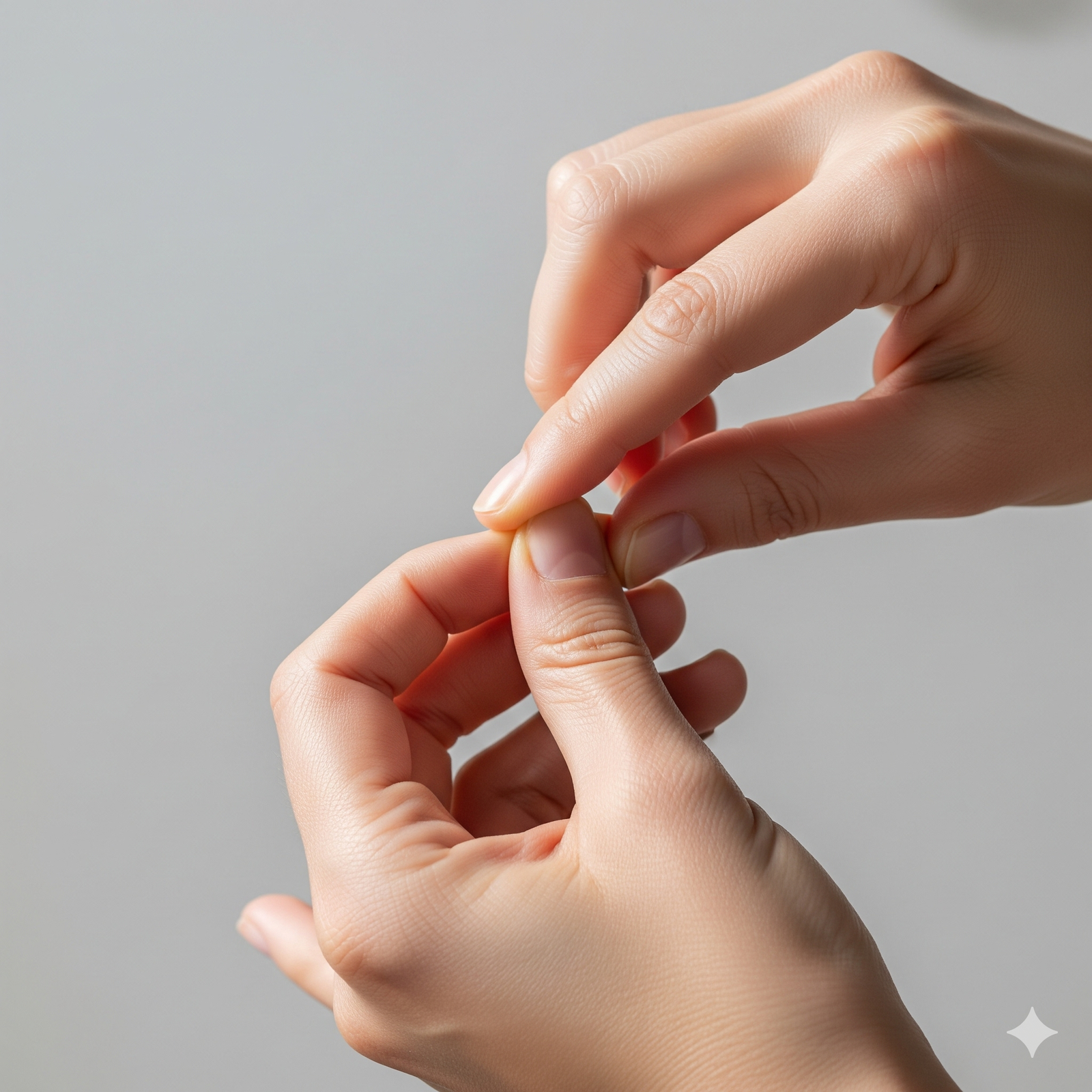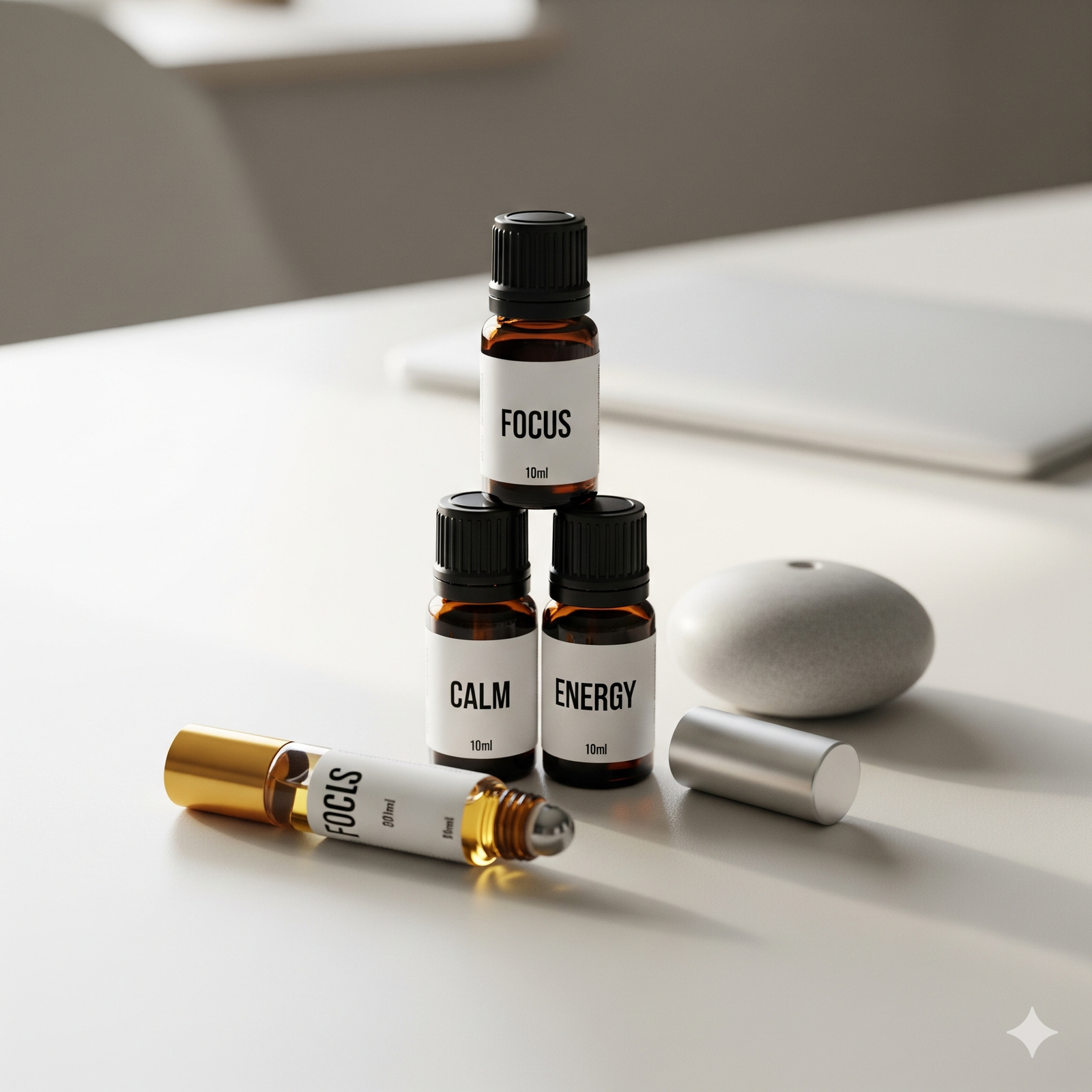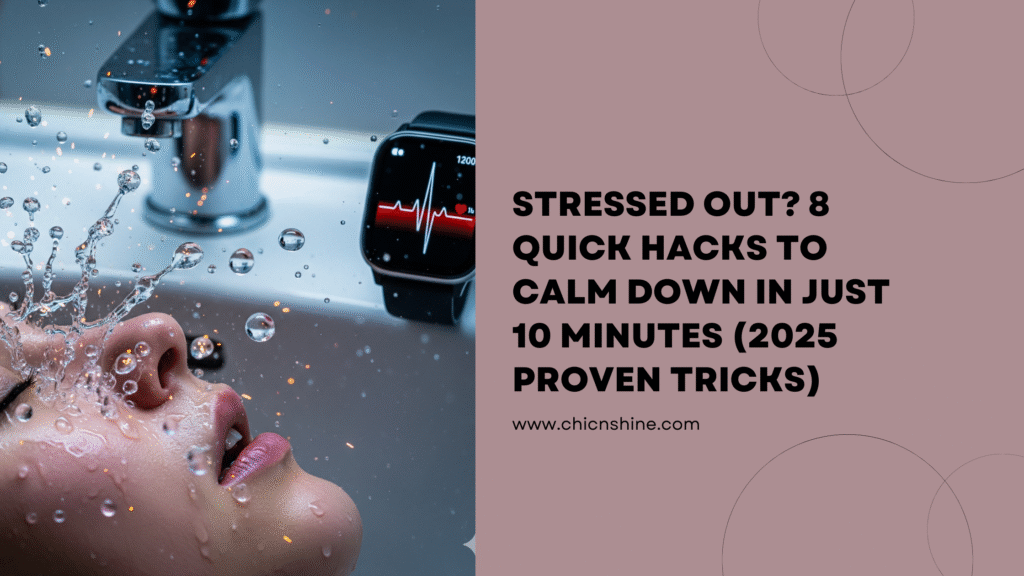Last month, I received a phone call that sent my stress levels through the roof—my biggest client was threatening to cancel their contract, my presentation was in thirty minutes, and I could feel my heart racing like I’d just sprinted a mile. That’s when I desperately needed to know how to stop stress quickly, and I had exactly ten minutes to get myself together.
What happened next changed everything. Using the techniques I’m about to share with you, I transformed from a panicked, sweating mess into a calm, confident professional ready to save that crucial business relationship. These methods didn’t just help me in that moment—they’ve become my go-to emergency stress relief toolkit.
Today, I’m sharing these eight powerful techniques because life doesn’t always give us hours to meditate or take long walks. Sometimes we need instant relief, and these scientifically-backed methods deliver results in ten minutes or less, wherever you are.
Why Quick Stress Relief Actually Works
Before diving into the techniques, let me explain why learning how to stop stress quickly became essential for my well-being. Our bodies are designed to handle acute stress through the fight-or-flight response, but modern life often traps us in chronic stress cycles without natural resolution.
However, I discovered that rapid stress relief techniques work by activating our parasympathetic nervous system—the body’s natural relaxation response. These methods literally flip a biological switch, moving us from stress mode to calm mode within minutes.
Moreover, research shows that quick stress interventions prevent the cascade of stress hormones that can damage our health over time. When we stop stress in its tracks, we protect our cardiovascular system, immune function, and mental clarity for the challenges ahead.
8 Proven Ways to Stop Stress in 10 Minutes or Less
1. The 4-7-8 Breathing Reset (3 Minutes)
My first go-to technique when I need to know how to stop stress quickly is the 4-7-8 breathing method. I learned this from Dr. Andrew Weil, and it’s become my most reliable stress-buster because it works anywhere, anytime, without anyone noticing.
Here’s exactly how I do it: I inhale through my nose for 4 counts, hold my breath for 7 counts, then exhale completely through my mouth for 8 counts. I repeat this cycle four times, and by the end, my heart rate has noticeably slowed, and my mind feels clearer.
Furthermore, this technique works by increasing oxygen to the brain while activating the vagus nerve, which signals our nervous system to relax. The counting aspect also provides mental focus that interrupts anxious thought patterns.
Step-by-step instructions:
- Find a comfortable position (sitting or standing works fine)
- Place your tongue against the ridge behind your upper teeth
- Exhale completely through your mouth
- Close your mouth and inhale through your nose for 4 counts
- Hold your breath for 7 counts
- Exhale through your mouth for 8 counts
- Repeat 3-4 cycles

2. Progressive Muscle Release (5-8 Minutes)
When I feel tension building in my shoulders and jaw, I use progressive muscle relaxation to quickly release physical stress. This technique taught me that I carry more tension in my body than I realize, and releasing it instantly calms my mind.
Starting with my toes, I systematically tense each muscle group for 5 seconds, then release completely. The contrast between tension and relaxation helps me identify where I’m holding stress and consciously let it go. Additionally, this method works because physical relaxation directly signals mental calmness to our brain.
My quick version for busy moments:
- Clench your fists tightly for 5 seconds, then release
- Shrug your shoulders up to your ears, hold, then drop them
- Scrunch your facial muscles, then relax completely
- Tense your leg muscles, then let them go limp
This abbreviated version takes just 2-3 minutes but provides significant relief when time is limited.
3. Cold Water Face Plunge (2 Minutes)
One of the fastest ways I’ve discovered to stop stress quickly is the cold water technique. When I splash cold water on my face or hold a cold, damp cloth over my eyes, it activates what scientists call the “dive response,” immediately slowing my heart rate and reducing stress hormones.
Moreover, this technique works by stimulating the vagus nerve and triggering an automatic relaxation response. I keep a small towel in my office freezer specifically for stressful moments, and it’s incredibly effective for instant relief.
Quick implementation:
- Fill a sink with cold water (50-60°F is ideal)
- Splash your face several times or submerge for 15-30 seconds
- Alternatively, place a cold, wet cloth over your eyes and temples
- Breathe deeply while the cold stimulates your nervous system
4. Pressure Point Magic (3-5 Minutes)
Acupressure became one of my favorite techniques for how to stop stress quickly because it requires no equipment and works incredibly fast. I learned several pressure points that provide immediate relief, and I can use them anywhere without drawing attention.
My most effective pressure points include the space between my thumb and index finger (LI4 point), the center of my palm, and the soft spot between my eyebrows. Applying gentle pressure for 30-60 seconds while breathing deeply creates almost instant relaxation.
Key pressure points I use:
- LI4 Point: Press the webbing between thumb and index finger
- Yintang Point: Gentle pressure between the eyebrows
- Shenmen Point: Press the upper ear cartilage fold
- Heart 7: Press the wrist crease below the pinky finger
Furthermore, I’ve found that combining pressure points with deep breathing amplifies the stress-relief effects significantly.

5. Rapid Grounding Technique (2-4 Minutes)
When my stress involves racing thoughts or feeling overwhelmed, I use the 5-4-3-2-1 grounding technique to quickly reconnect with the present moment. This method interrupts anxiety spirals by engaging all my senses and bringing my attention back to reality.
Here’s exactly how I practice it: I identify 5 things I can see, 4 things I can touch, 3 things I can hear, 2 things I can smell, and 1 thing I can taste. This sensory inventory instantly pulls me out of stress-inducing thoughts and into the present moment.
Additionally, I’ve modified this technique for different environments. In meetings, I might focus more on visual and auditory elements, while at home I can engage all senses more fully.
- Read More – 6 Stress Symptoms You’re Probably Ignoring — And Why They Could Wreck Your Health in 2025
6. Movement Reset (5-10 Minutes)
Physical movement became essential when I learned how to stop stress quickly because it literally helps metabolize stress hormones while releasing tension. Even five minutes of intentional movement can dramatically shift my stress levels and mental state.
My favorite quick movements include desk stretches, walking up and down stairs, or doing jumping jacks in a private space. The key is choosing movement that feels good and gets my blood flowing without causing additional stress about appearance or performance.
Quick movement options:
- Neck and shoulder rolls at your desk
- Wall push-ups in a private office
- Walking meditation around your building
- Simple yoga stretches like cat-cow pose
- Dancing to one favorite song
7. Aromatherapy Emergency Kit (1-3 Minutes)
Essential oils became my secret weapon for how to stop stress quickly because scent directly impacts our limbic system—the brain’s emotional center. I carry a small rollerball of lavender and peppermint oil that provides instant relief when applied to pulse points.
Moreover, I learned that certain scents trigger immediate relaxation responses faster than any other sensory input. Lavender reduces cortisol levels, while peppermint increases alertness without stress. Having these tools readily available has saved me in countless high-pressure situations.
My emergency aromatherapy kit includes:
- Lavender oil for general stress relief
- Peppermint oil for mental clarity and alertness
- Eucalyptus oil for breathing and focus
- A small diffuser for my office space

8. Mindful Observation Exercise (3-7 Minutes)
My final technique for stopping stress quickly involves mindful observation of my immediate environment. When I feel overwhelmed, I choose one object—perhaps a plant, photograph, or piece of artwork—and study it completely for several minutes.
I notice colors, textures, shapes, and shadows while breathing slowly and deeply. This practice interrupts stress-inducing thought patterns while providing a meditative focus that calms both mind and body. Furthermore, this technique works exceptionally well in any environment since every space contains objects worthy of mindful attention.
Additionally, I’ve found that ending this exercise by appreciating something beautiful in my environment creates a positive emotional shift that extends beyond the immediate stress relief.
User Queries from Stress Management Communities
Based on popular questions from online stress relief forums, here are additional insights:
“Do these quick techniques really work for severe anxiety attacks?” From my experience, these methods are most effective for general stress and mild anxiety. However, during my panic attack episodes, the breathing and cold water techniques provided significant relief while I sought professional help.
“Can I use multiple techniques together?” Absolutely! I often combine breathing exercises with pressure points or aromatherapy. However, when you’re stressed, it’s better to master one technique thoroughly rather than rushing through several superficially.
“What if I can’t find privacy for these techniques?” Most of these methods can be done discreetly. Breathing exercises, pressure points, and mindful observation work perfectly in public spaces without drawing attention to yourself.
“How do I remember to use these techniques when I’m already stressed?” I created visual reminders on my phone and computer, plus I practiced these techniques when calm so they became automatic responses during stressful moments.
Building Your Personal Emergency Stress Kit
After mastering these techniques, I assembled a physical emergency stress kit that I keep in my desk drawer and travel bag. This preparation ensures I always have tools available when I need to know how to stop stress quickly.
My emergency kit contains:
- Essential oil rollerball
- Small towel for cold water technique
- Stress ball for physical tension release
- Written instructions for breathing exercises
- Calming music playlist on my phone
Additionally, I’ve discovered that having these tools readily available reduces my overall stress levels because I feel prepared to handle whatever challenges arise.
Image Suggestion 4: Organized stress relief kit with labeled items AI Prompt: “Neatly organized stress relief kit in small box with essential oils, stress ball, towel, and instruction cards, clean white background, organized lifestyle photography”
When Quick Relief Isn’t Enough
While learning how to stop stress quickly has been life-changing, I also recognize when these techniques aren’t sufficient. If I find myself needing emergency stress relief multiple times daily, or if quick techniques stop being effective, that’s my signal to address underlying stress sources.
Moreover, these rapid relief methods work best as part of a comprehensive stress management approach that includes regular exercise, adequate sleep, and healthy relationships. Quick fixes are valuable tools, but lasting stress relief requires lifestyle changes and sometimes professional support.
Making Quick Stress Relief a Habit
The key to successfully using these techniques is practice during calm moments, not just during crises. I spend five minutes each morning reviewing these methods and practicing my favorites so they become second nature when stress hits unexpectedly.
Furthermore, I’ve learned to recognize my early stress warning signs—tight shoulders, shallow breathing, or racing thoughts—so I can implement these techniques before reaching peak stress levels. Prevention is always more effective than crisis management.
FAQs
From my experience, breathing techniques and cold water provide relief within 30-60 seconds, while techniques like progressive muscle relaxation take 3-5 minutes to show significant effects. The key is consistent practice to maximize effectiveness.
Most of these methods are generally safe, but I always recommend consulting healthcare providers if you have heart conditions, breathing disorders, or other medical concerns before trying new stress relief techniques.
Different methods work for different people and situations. I suggest trying each technique several times in various circumstances to find what works best for your specific stress patterns and lifestyle. How quickly do these techniques actually work?
Can I use these techniques if I have medical conditions?
What if these techniques don't work for me?
Conclusion: Your 10-Minute Stress Solution Toolkit
Learning how to stop stress quickly has transformed my relationship with daily challenges and given me confidence to handle whatever life throws my way. These eight techniques—from breathing exercises to aromatherapy—provide immediate relief when you need it most.
Remember that quick stress relief is a skill that improves with practice. The more you use these techniques during calm moments, the more effective they become during genuine stress emergencies. Your future self will thank you for building this essential life skill.
Don’t wait for your next stress crisis to try these methods. Start practicing today, create your emergency stress kit, and enjoy the peace of mind that comes from knowing you can find calm in any storm within just ten minutes.


